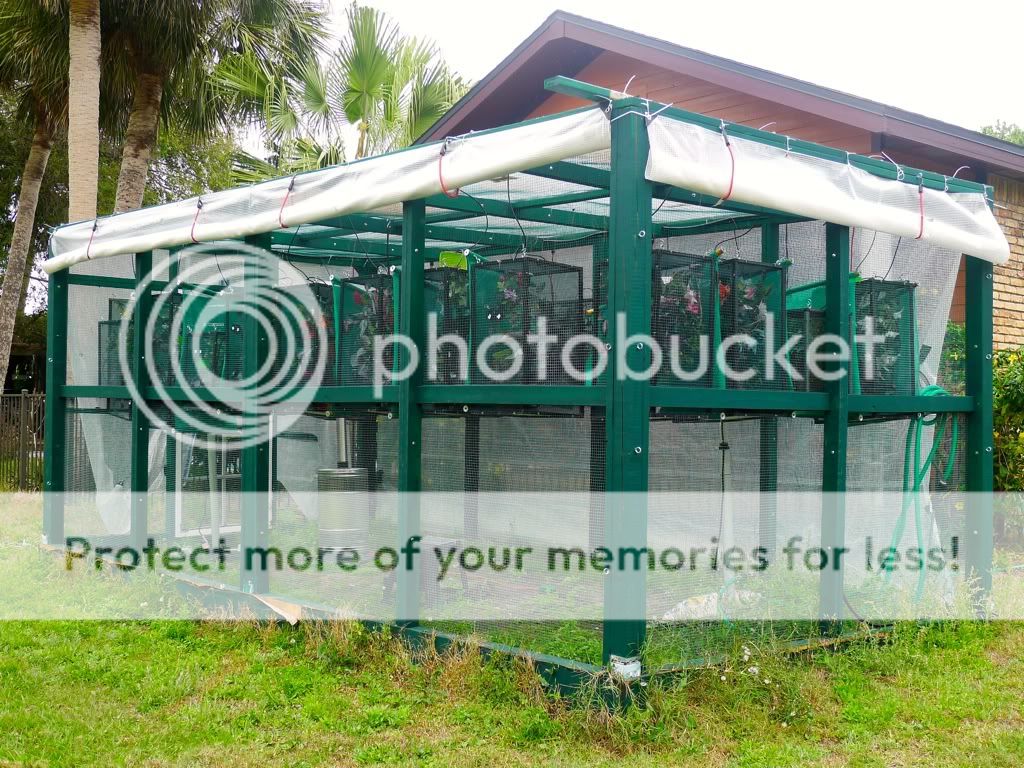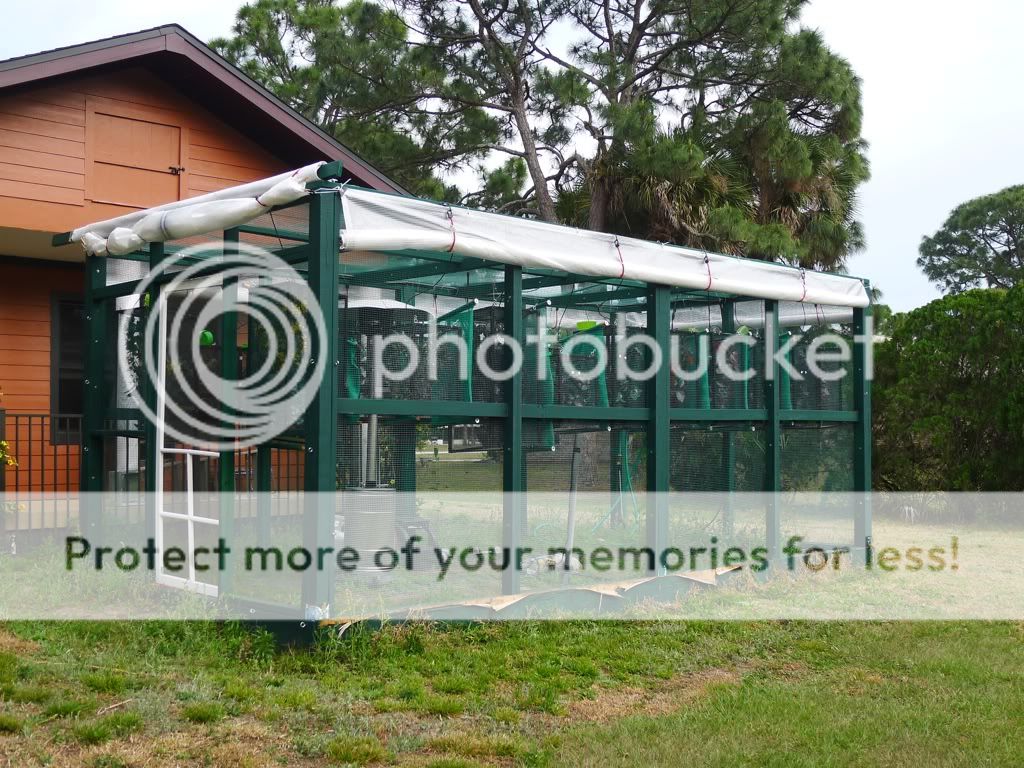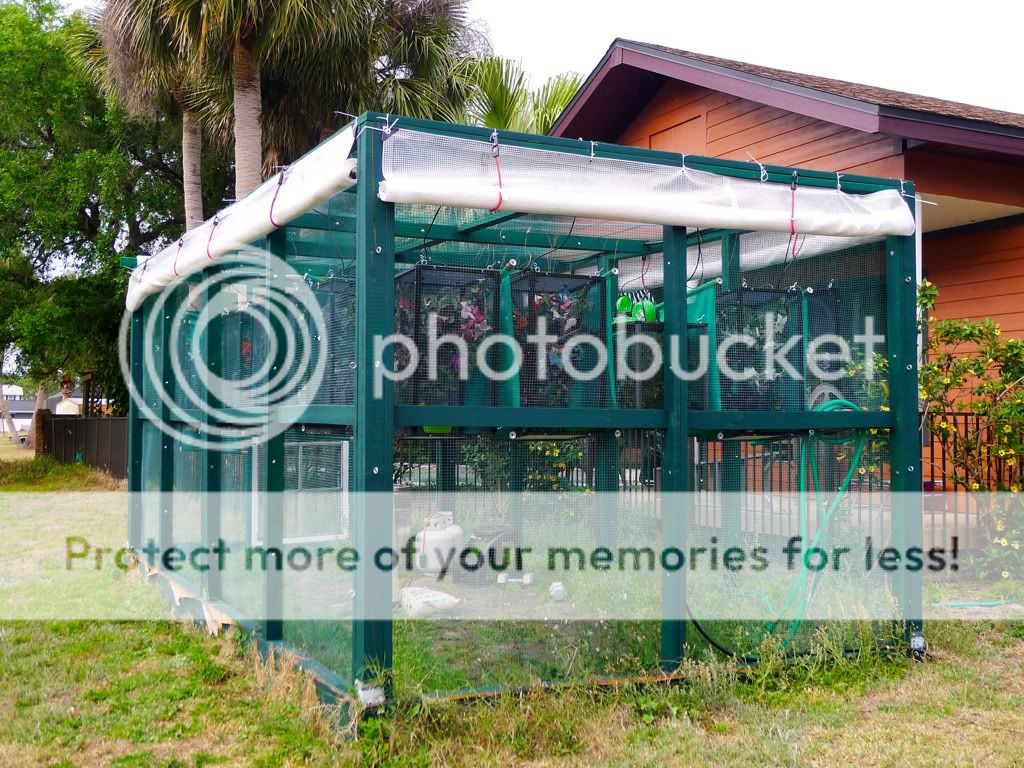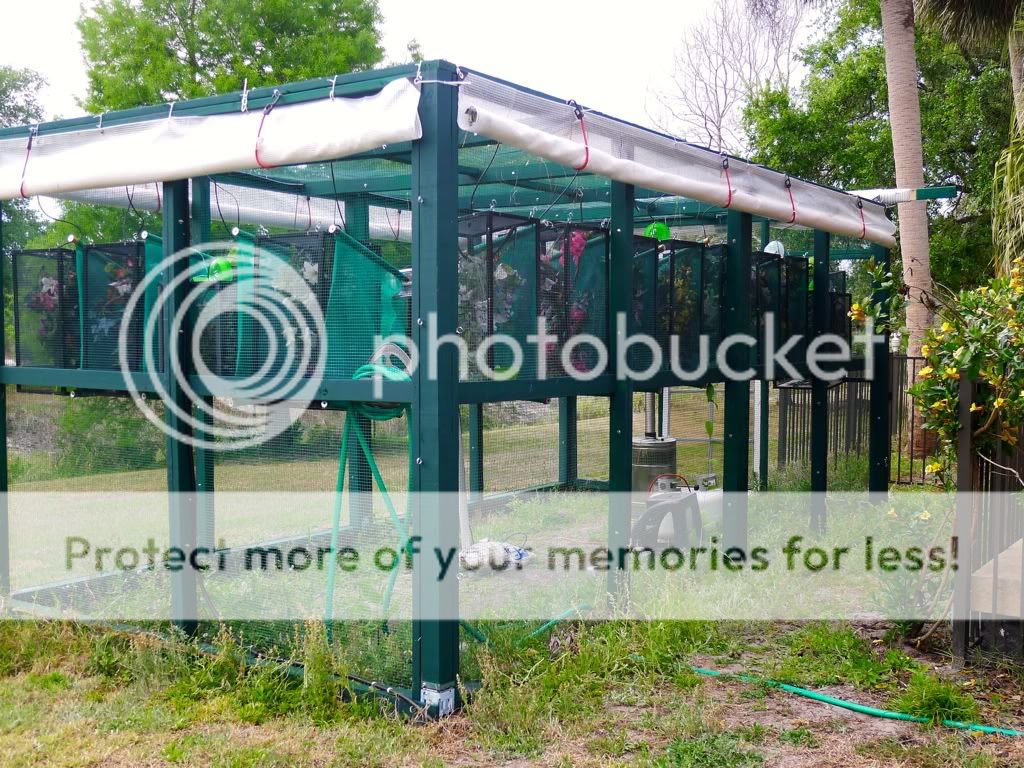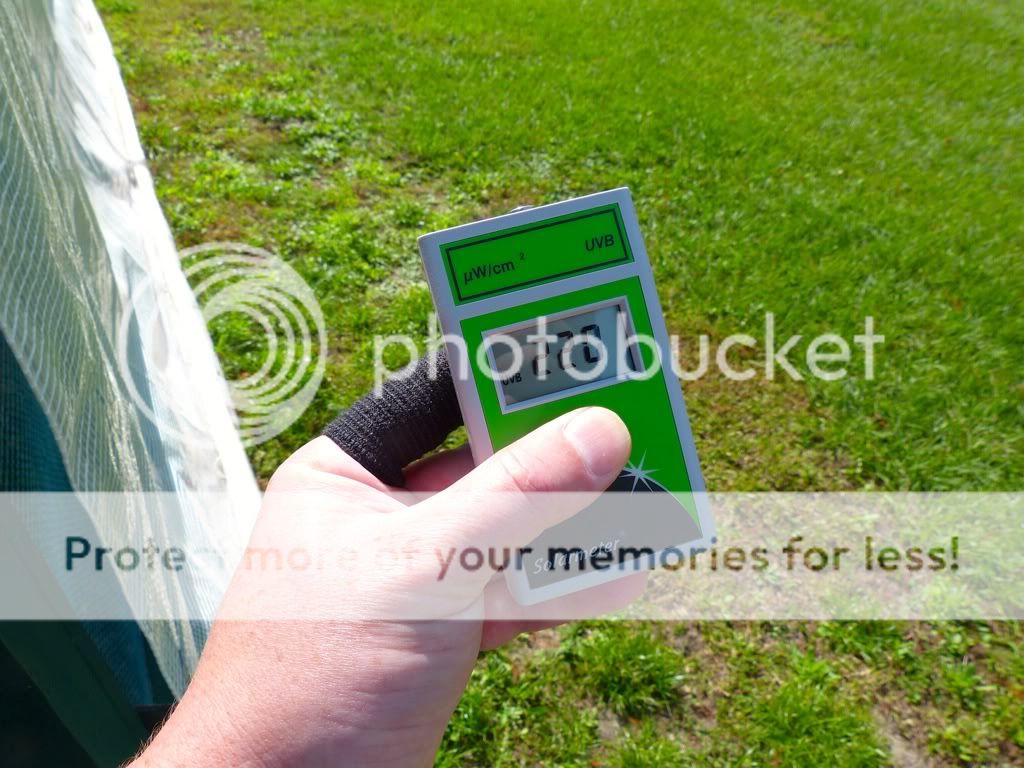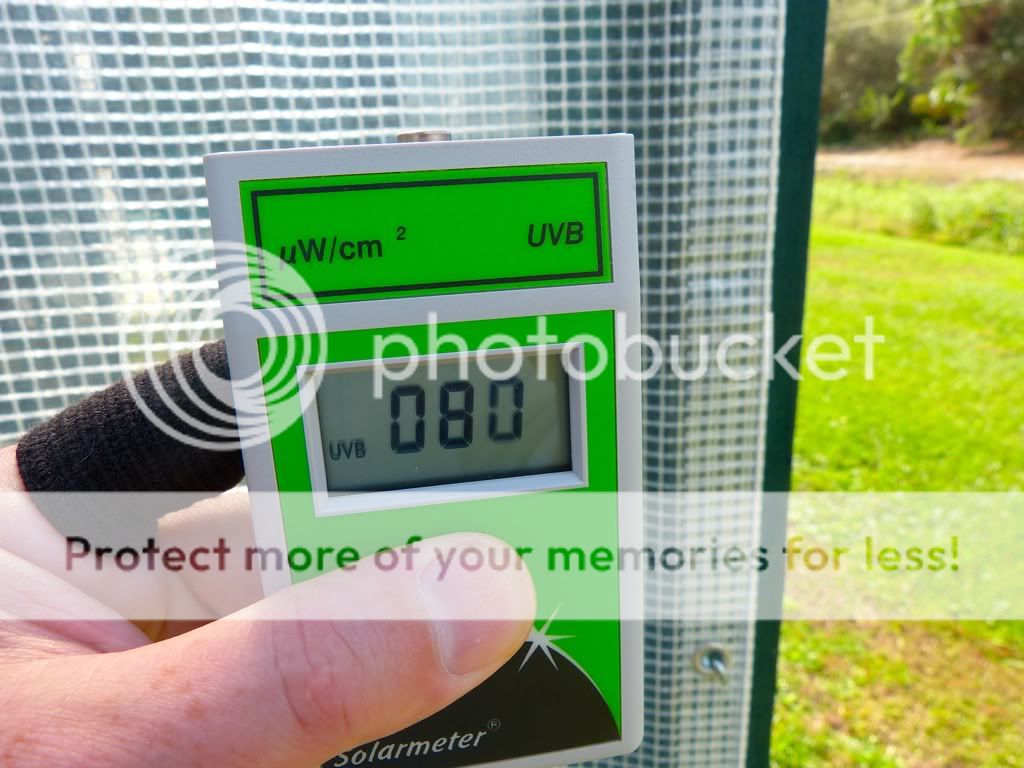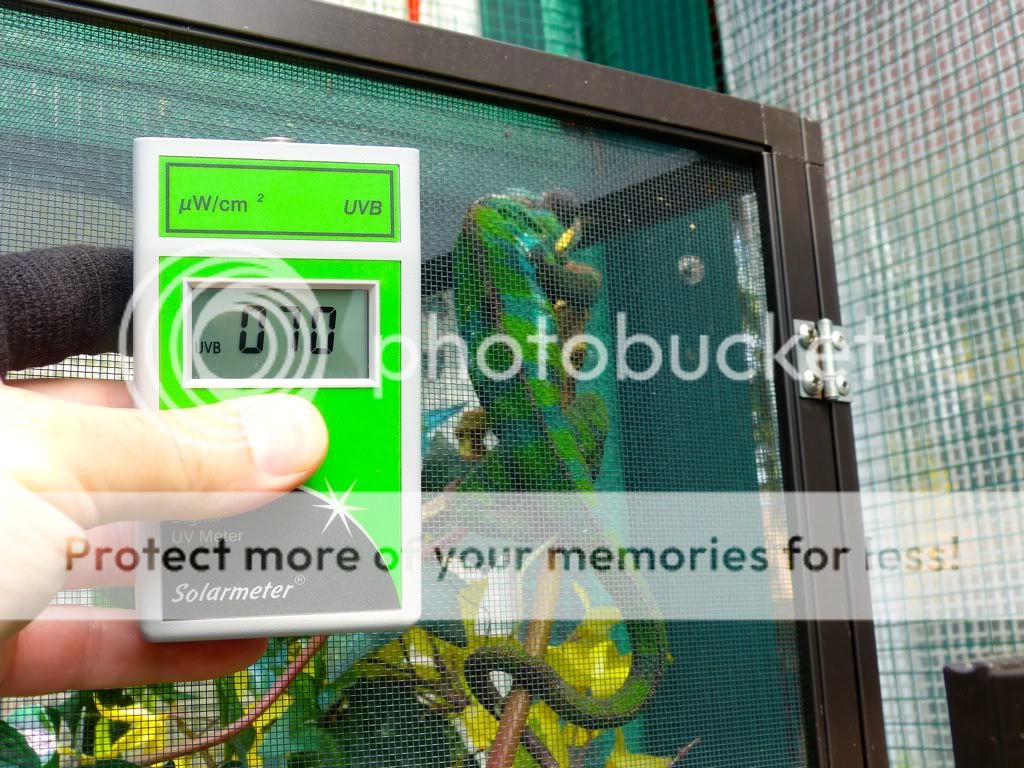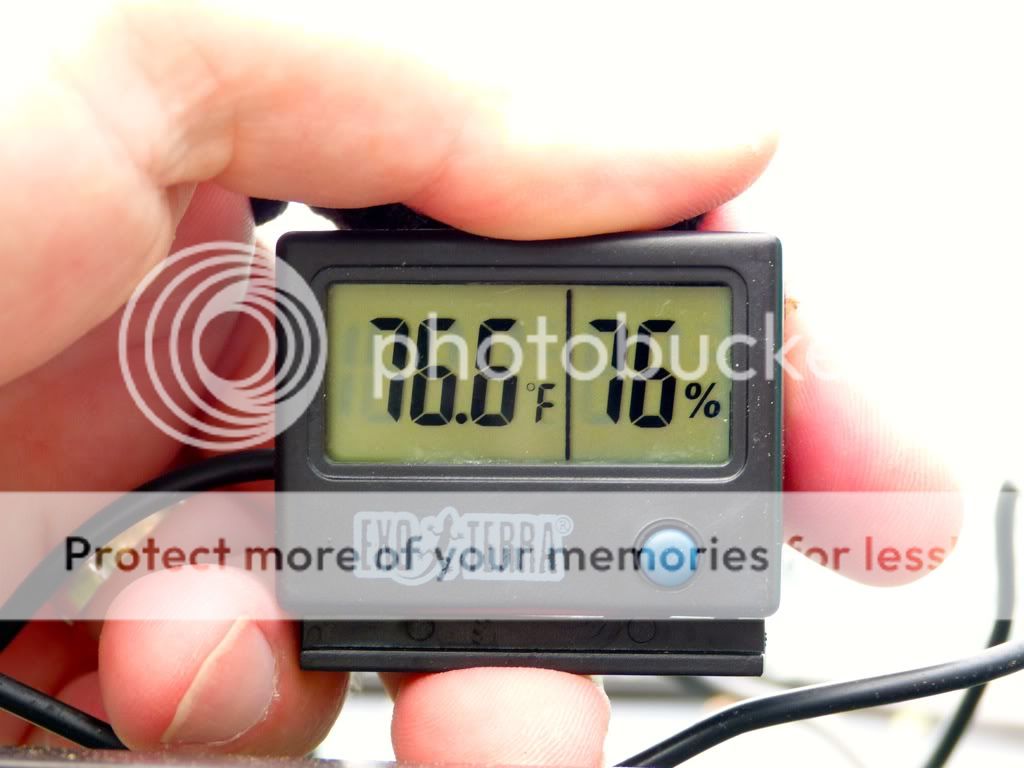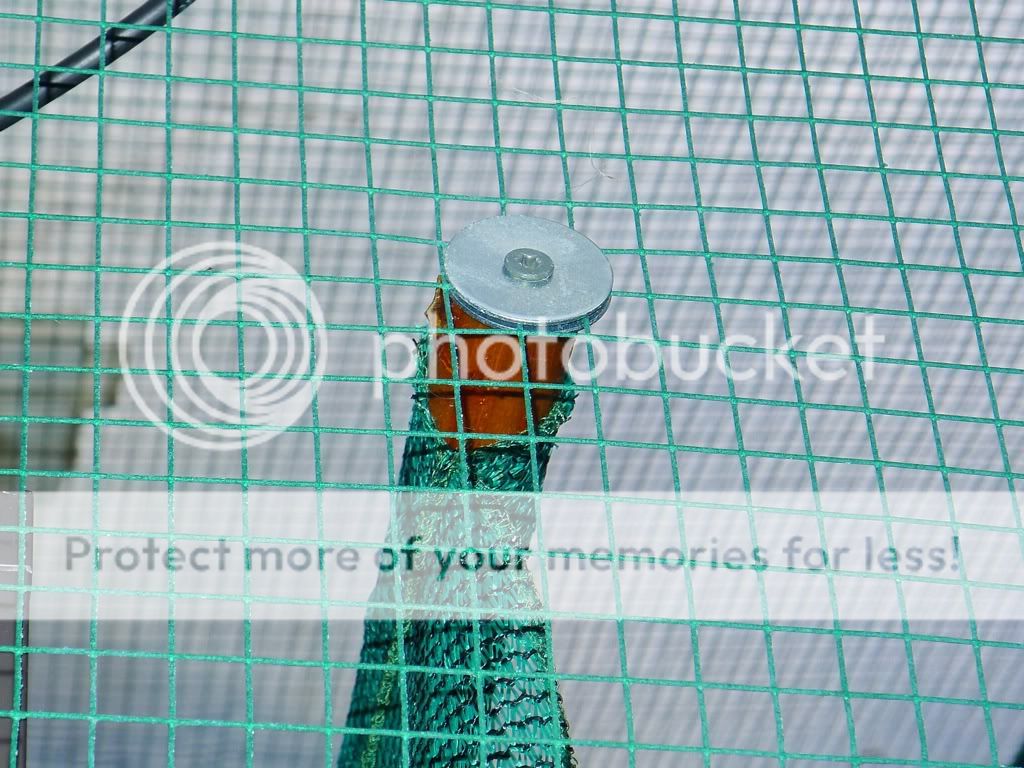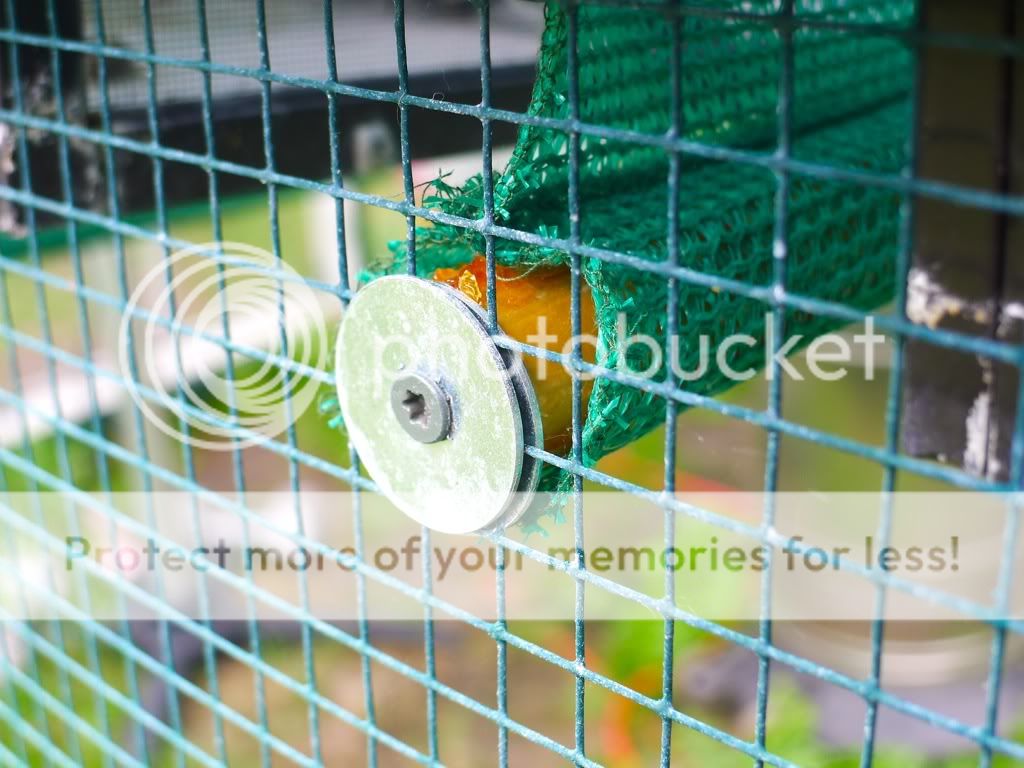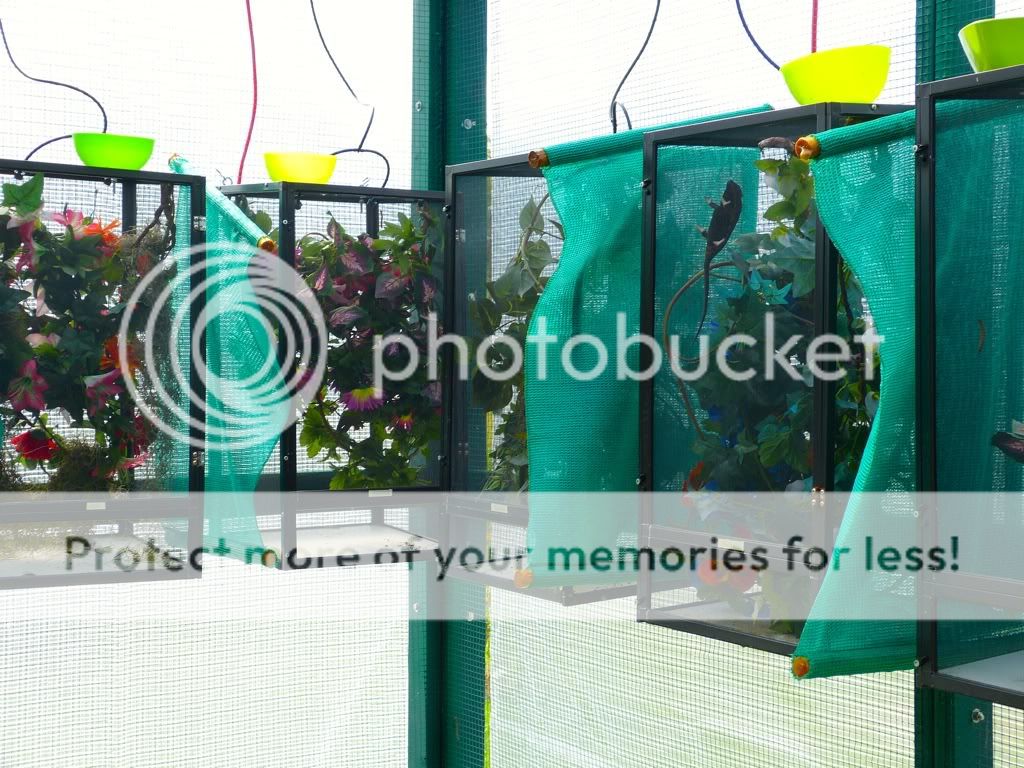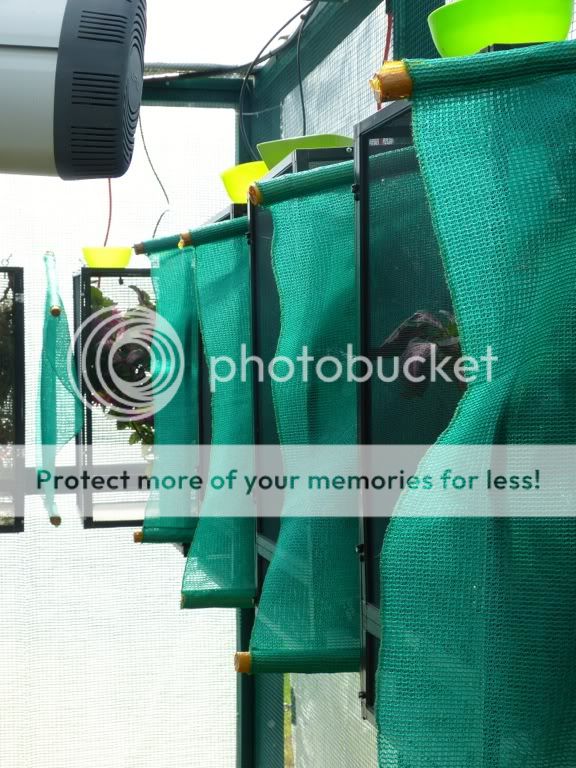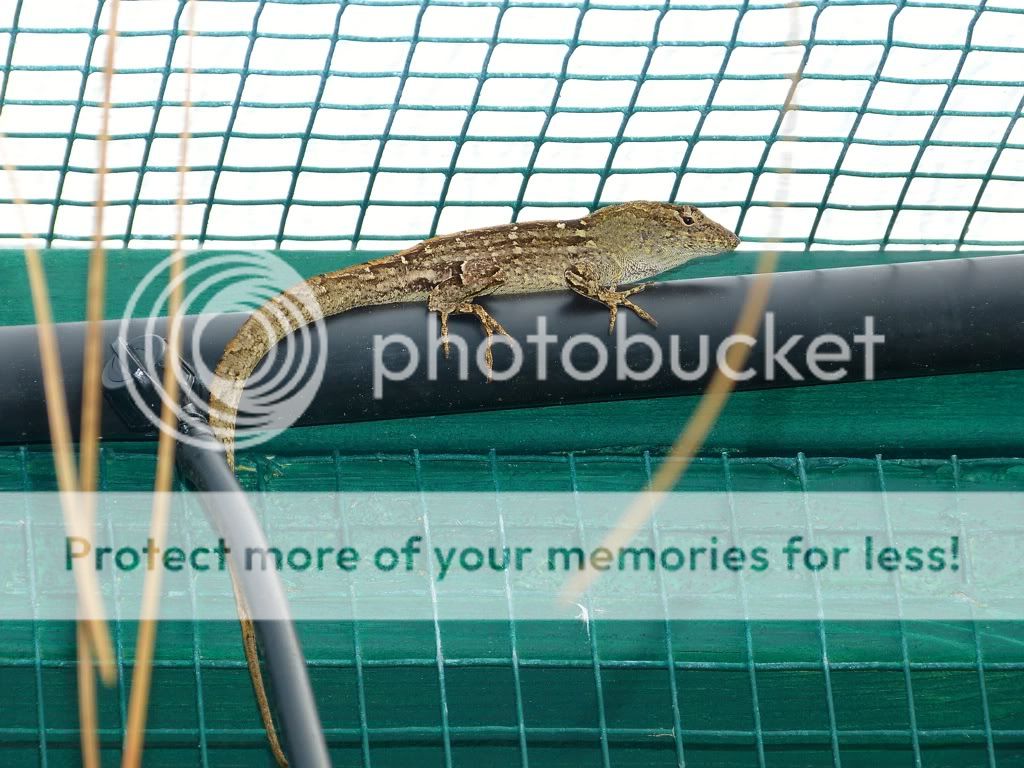Dr O
Veterinarian
hello all,
i would like to continue to show the evolution of my GOC (Giant Outdoor Cage). for those unfamiliar with it, the construction can be seen here https://www.chameleonforums.com/my-new-goc-85088/. the region of Florida that i live in on the east-central coast has a much different climate than south Florida; it changes about 100 miles south of where i live. much cooler weather overall, 40-50° nights in winter months with the rare freeze, and 55-75° days. before i had built the GOC i thought that i would be bringing them indoors for the winters into my mother-in-law suite, but the functionality of the GOC has been so conducive to their overall health and bringing that many chams indoors for a few months had it’s own set of headaches, so i decided that i would modify the enclosure to keep them outdoors year-round.
the original basics of what i would need were 2 things; some kind of siding and roof that would be waterproof and allow me to have UVB lights in the enclosure, and heat sources. that became undoable as i started to put together how many electrical components were necessary with their watering system. the risk of electrocution for them or myself was too high. at that point i began looking at UVT (ultraviolet-transmitting) materials. although common knowledge has it that the UVA and UVB spectrum is completely blocked by glass or plastic, that isn’t necessarily true. some modified plastics and glass allow partial transmission, and others can be designed to allow full pass-through of the wavelengths. zoos and greenhouses are good examples of situations that require these materials. after weeks of research, emails and phone calls i had decided on Acrylite Alltop which is a multi-channeled plastic that allows over 98% of the necessary rays to pass through, but is also UV protected so that it won’t break down, brittle or yellow. as the enclosure is 10’x20’ i was planning on using it just for the roof and clear tarps for the sides. since it would be a seasonal situation, the manufacturer was going to cut it into six 11’x4’ sections that when laid out would cover the roof as well as providing an 1’ rain overhang on all four sides. the material was going to be extruded and cut in Toronto and then trucked down to Florida. i devised a system to attach the pieces together so that they would be lightly bolted down but could be easily removed and accordion-folded at the end of the season for easier storage. it was quite pricey, but i didn’t see any other options that were less expensive or reusable. so i placed the order.
in the meantime i had ordered clear, polyethylene, reinforced tarps for the four sides. they were attached to the tops with zipties for seasonal removal, had several eyebolts and hooks along each edge to hold it in place but still allowing air to circulate freely, and 2x4’s were placed along the bottoms so that they could be rolled up and held by bungee cords at the top when the weather was better. for the tarp over the door there is a wonderful $8 product sold at hardware stores that essentially allows you to adhere a zippered opening onto a tarp and then the tarp is cut, so one can pass though a zippered opening to enter the enclosure
as we were putting the tarps up on a sunny October day i decided to see how much UVB they were blocking as polyethylene should block almost 100% of the essential rays. to my utter shock, the tarps blocked about 75% of the rays but the 25% transmission in the Florida sun was still 5-10x as much UVB as a Reptisun 5.0 or Powersun/Active UVB lamp!! my immediate reaction was that the Solarmeter was malfunctioning, but holding up any glass or other plastic material that we had around did drop the level to 0% transmission. this was completely unexpected, and as an additional tarp for the roof cost literally less than 1% of the Acrylite Alltop i quickly ran to the phone and cancelled the order in time. by that point i had several conversations with some of the technical staff at Acrylite and when i told them what happened with the tarps they were as surprised as i was. one of the techs even worked on it for several days, and came back to me with the information that my tarps should indeed have been blocking all the rays and the fact that at least 25% was passing through just was not in their databank. finally a second UVB meter confirmed exactly what mine was reading, so the direction changed again. i bought a tarp for the roof, eyebolts and hooks for the edges and a 2x4 to roll it up when not needed. some slits were made in the roof tarp to allow rainwater to flow through and not puddle up.
with tarps covering the sides and roofs a wonderful greenhouse effect was produced, so a typical 65° day would be 78-80° in the enclosure while also keeping the humidity in the 60-70% range from the 4-5x daily watering. however i still needed a source of heat for the really cold nights. i wound up buying two midwave infrared heaters and stands that are the most powerful one can buy without access to a 220v outlet. i ran two 12g extension cords from separate circuits into the enclosure, used waterproof covers over the plug connections, stabilized them on the slightly uneven ground, and then had 3000w of very directional heat. on a 50° night they would throw the heat 12-15’ to a comfortable 65°. however, as the enclosure is 20’ long, it still wasn’t enough for the colder nights when they occurred. luckily i already own a 40,000 BTU patio heater that runs off of propane tanks, so when that was brought in i was finally set. i needed to even keep the propane heater on the low setting since the heat was not only thrown in a 360° circle but also gave off a tremendous amount of ambient heat. it was no problem at all to heat the enclosure into the 60’s or higher on a mid-30° night. when burned, propane turns into water and carbon dioxide molecules, but designing the enclosure with all edges slightly open and my breezy backyard there was no problem with any concern over CO2 buildup. the greenhouse effect worked so well during the day that i never once had to run any daytime heat. through the last 6 months i have refilled my propane tanks about a dozen times. while a PITA, at least it wasn’t terribly expensive at about $15/refill.
everything has worked like a champ thus far. however, those cold nights would still make me nervous enough that i rarely slept, constantly checking the temperatures or replacing a low propane tank. if it was a 48 hour cold snap or less i would use the system, but if it was going to be 3 days or longer then i wound up bringing everyone indoors due to the cost of keeping them outside and my lack of sleep. the guest bedroom and several of the large, 6-compartment collapsible cages that i have sold at shows worked perfectly for some temporary indoor housing. i would rely on hand misting and non-aggressive insects to feed them, but typically kept it dark in the room so that they mostly just slept the few days away.
an addition made to the enclosure unrelated to the winter situation but not shown on the previous thread was a method of placing a visual barrier between cages. after coming up with several ideas and options, i decided on this plan. i bought a roll of the green “SunShade” material that is sold in hardware stores, many dowels, a gallon of polyurethane and fasteners. i brought the fabric to a local tailor and had them cut the sheets to my specifications and sew channels into the top and bottom for the dowels. after i cut the dowels to size rather than paint them over and over i just soaked them all for about two weeks in a plastic tub with the gallon of polyurethane, rotating them around every day so that some would be drying while others soaked. doing this repeatedly added a very thick layer in and on the surface of the entire dowels which are exposed to water constantly. i then pre-drilled one end of the dowels after they had dried, and attached them to the hardware cloth enclosure using 5” lag screws and some large washers. the final result in an excellent visual barrier that still allows air flow and should withstand the elements for some time.
the entire tarped enclosure:





the zippered door:

close-ups of the tarp material, attachments, ventilation and roof rain slits:





infrared and propane heaters on at night (different positional setups were tried):



sample piece of Acrylite Alltop:

(to be continued)
i would like to continue to show the evolution of my GOC (Giant Outdoor Cage). for those unfamiliar with it, the construction can be seen here https://www.chameleonforums.com/my-new-goc-85088/. the region of Florida that i live in on the east-central coast has a much different climate than south Florida; it changes about 100 miles south of where i live. much cooler weather overall, 40-50° nights in winter months with the rare freeze, and 55-75° days. before i had built the GOC i thought that i would be bringing them indoors for the winters into my mother-in-law suite, but the functionality of the GOC has been so conducive to their overall health and bringing that many chams indoors for a few months had it’s own set of headaches, so i decided that i would modify the enclosure to keep them outdoors year-round.
the original basics of what i would need were 2 things; some kind of siding and roof that would be waterproof and allow me to have UVB lights in the enclosure, and heat sources. that became undoable as i started to put together how many electrical components were necessary with their watering system. the risk of electrocution for them or myself was too high. at that point i began looking at UVT (ultraviolet-transmitting) materials. although common knowledge has it that the UVA and UVB spectrum is completely blocked by glass or plastic, that isn’t necessarily true. some modified plastics and glass allow partial transmission, and others can be designed to allow full pass-through of the wavelengths. zoos and greenhouses are good examples of situations that require these materials. after weeks of research, emails and phone calls i had decided on Acrylite Alltop which is a multi-channeled plastic that allows over 98% of the necessary rays to pass through, but is also UV protected so that it won’t break down, brittle or yellow. as the enclosure is 10’x20’ i was planning on using it just for the roof and clear tarps for the sides. since it would be a seasonal situation, the manufacturer was going to cut it into six 11’x4’ sections that when laid out would cover the roof as well as providing an 1’ rain overhang on all four sides. the material was going to be extruded and cut in Toronto and then trucked down to Florida. i devised a system to attach the pieces together so that they would be lightly bolted down but could be easily removed and accordion-folded at the end of the season for easier storage. it was quite pricey, but i didn’t see any other options that were less expensive or reusable. so i placed the order.
in the meantime i had ordered clear, polyethylene, reinforced tarps for the four sides. they were attached to the tops with zipties for seasonal removal, had several eyebolts and hooks along each edge to hold it in place but still allowing air to circulate freely, and 2x4’s were placed along the bottoms so that they could be rolled up and held by bungee cords at the top when the weather was better. for the tarp over the door there is a wonderful $8 product sold at hardware stores that essentially allows you to adhere a zippered opening onto a tarp and then the tarp is cut, so one can pass though a zippered opening to enter the enclosure
as we were putting the tarps up on a sunny October day i decided to see how much UVB they were blocking as polyethylene should block almost 100% of the essential rays. to my utter shock, the tarps blocked about 75% of the rays but the 25% transmission in the Florida sun was still 5-10x as much UVB as a Reptisun 5.0 or Powersun/Active UVB lamp!! my immediate reaction was that the Solarmeter was malfunctioning, but holding up any glass or other plastic material that we had around did drop the level to 0% transmission. this was completely unexpected, and as an additional tarp for the roof cost literally less than 1% of the Acrylite Alltop i quickly ran to the phone and cancelled the order in time. by that point i had several conversations with some of the technical staff at Acrylite and when i told them what happened with the tarps they were as surprised as i was. one of the techs even worked on it for several days, and came back to me with the information that my tarps should indeed have been blocking all the rays and the fact that at least 25% was passing through just was not in their databank. finally a second UVB meter confirmed exactly what mine was reading, so the direction changed again. i bought a tarp for the roof, eyebolts and hooks for the edges and a 2x4 to roll it up when not needed. some slits were made in the roof tarp to allow rainwater to flow through and not puddle up.
with tarps covering the sides and roofs a wonderful greenhouse effect was produced, so a typical 65° day would be 78-80° in the enclosure while also keeping the humidity in the 60-70% range from the 4-5x daily watering. however i still needed a source of heat for the really cold nights. i wound up buying two midwave infrared heaters and stands that are the most powerful one can buy without access to a 220v outlet. i ran two 12g extension cords from separate circuits into the enclosure, used waterproof covers over the plug connections, stabilized them on the slightly uneven ground, and then had 3000w of very directional heat. on a 50° night they would throw the heat 12-15’ to a comfortable 65°. however, as the enclosure is 20’ long, it still wasn’t enough for the colder nights when they occurred. luckily i already own a 40,000 BTU patio heater that runs off of propane tanks, so when that was brought in i was finally set. i needed to even keep the propane heater on the low setting since the heat was not only thrown in a 360° circle but also gave off a tremendous amount of ambient heat. it was no problem at all to heat the enclosure into the 60’s or higher on a mid-30° night. when burned, propane turns into water and carbon dioxide molecules, but designing the enclosure with all edges slightly open and my breezy backyard there was no problem with any concern over CO2 buildup. the greenhouse effect worked so well during the day that i never once had to run any daytime heat. through the last 6 months i have refilled my propane tanks about a dozen times. while a PITA, at least it wasn’t terribly expensive at about $15/refill.
everything has worked like a champ thus far. however, those cold nights would still make me nervous enough that i rarely slept, constantly checking the temperatures or replacing a low propane tank. if it was a 48 hour cold snap or less i would use the system, but if it was going to be 3 days or longer then i wound up bringing everyone indoors due to the cost of keeping them outside and my lack of sleep. the guest bedroom and several of the large, 6-compartment collapsible cages that i have sold at shows worked perfectly for some temporary indoor housing. i would rely on hand misting and non-aggressive insects to feed them, but typically kept it dark in the room so that they mostly just slept the few days away.
an addition made to the enclosure unrelated to the winter situation but not shown on the previous thread was a method of placing a visual barrier between cages. after coming up with several ideas and options, i decided on this plan. i bought a roll of the green “SunShade” material that is sold in hardware stores, many dowels, a gallon of polyurethane and fasteners. i brought the fabric to a local tailor and had them cut the sheets to my specifications and sew channels into the top and bottom for the dowels. after i cut the dowels to size rather than paint them over and over i just soaked them all for about two weeks in a plastic tub with the gallon of polyurethane, rotating them around every day so that some would be drying while others soaked. doing this repeatedly added a very thick layer in and on the surface of the entire dowels which are exposed to water constantly. i then pre-drilled one end of the dowels after they had dried, and attached them to the hardware cloth enclosure using 5” lag screws and some large washers. the final result in an excellent visual barrier that still allows air flow and should withstand the elements for some time.
the entire tarped enclosure:
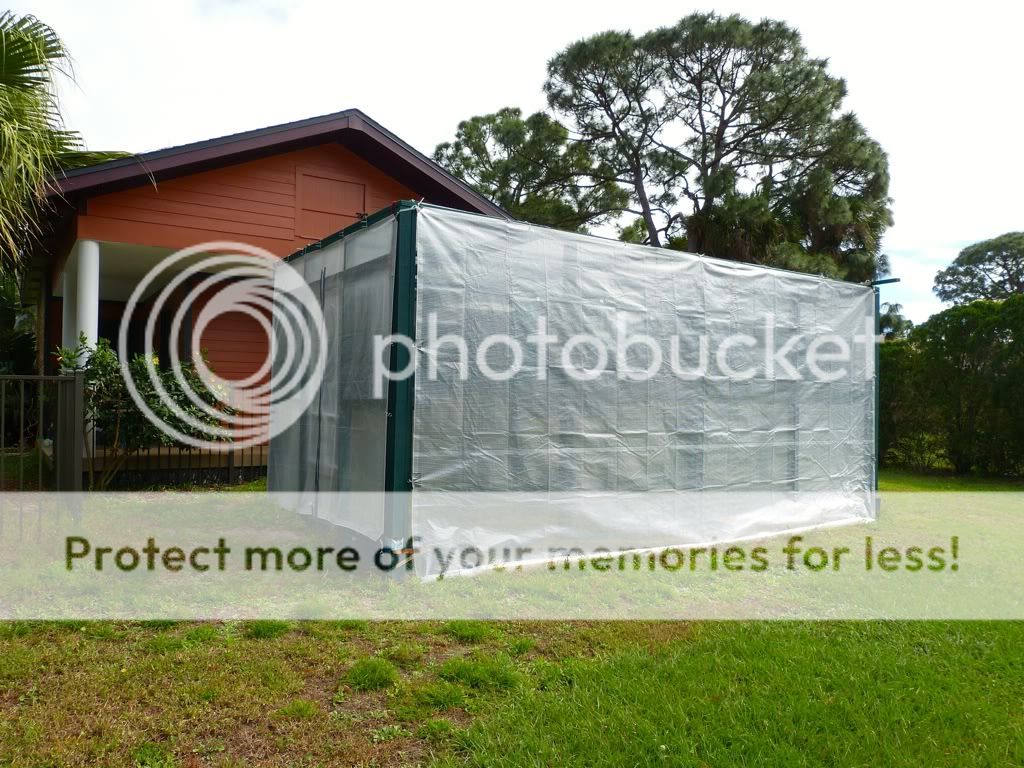
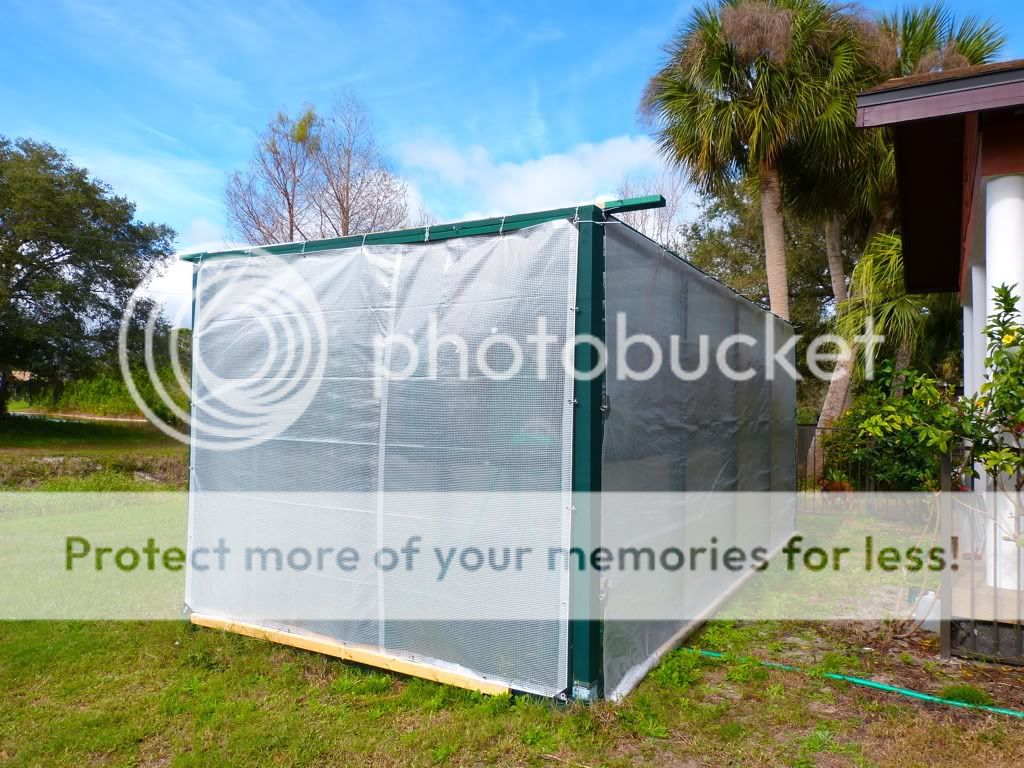
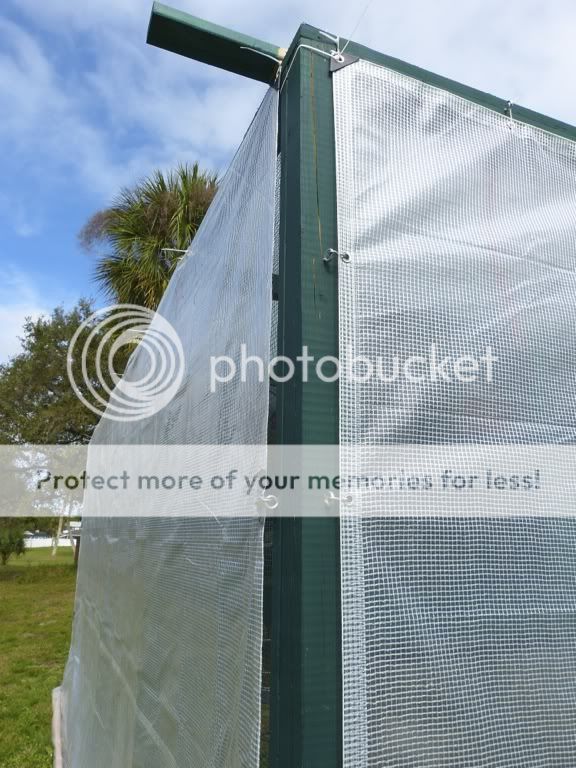
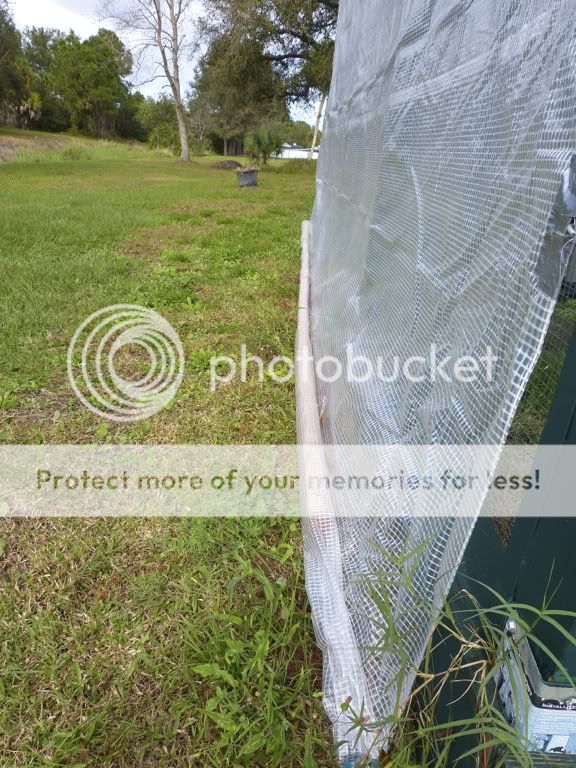
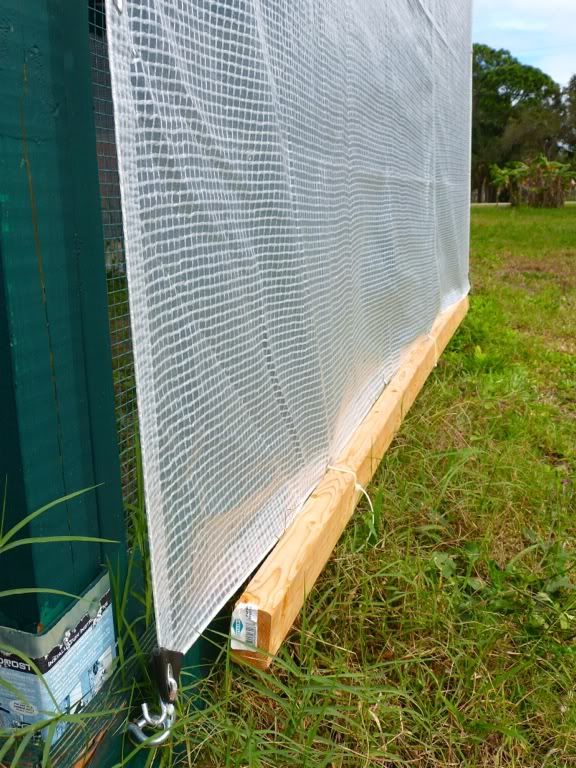
the zippered door:
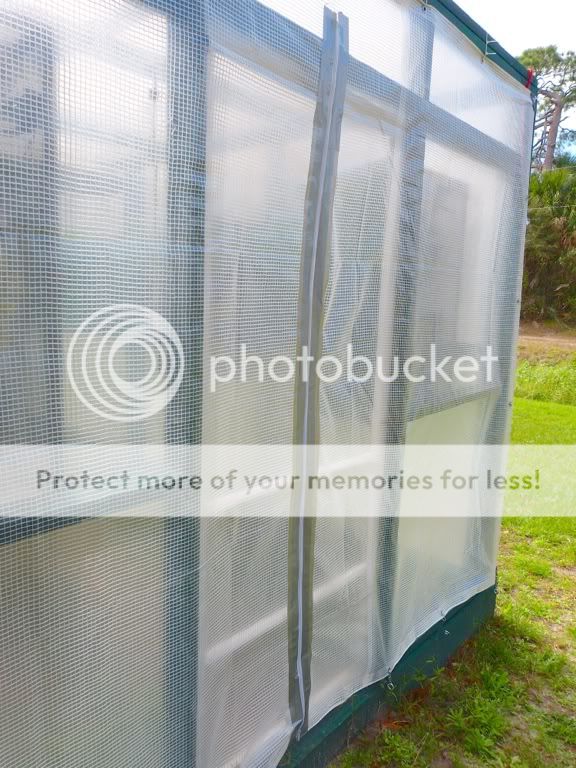
close-ups of the tarp material, attachments, ventilation and roof rain slits:
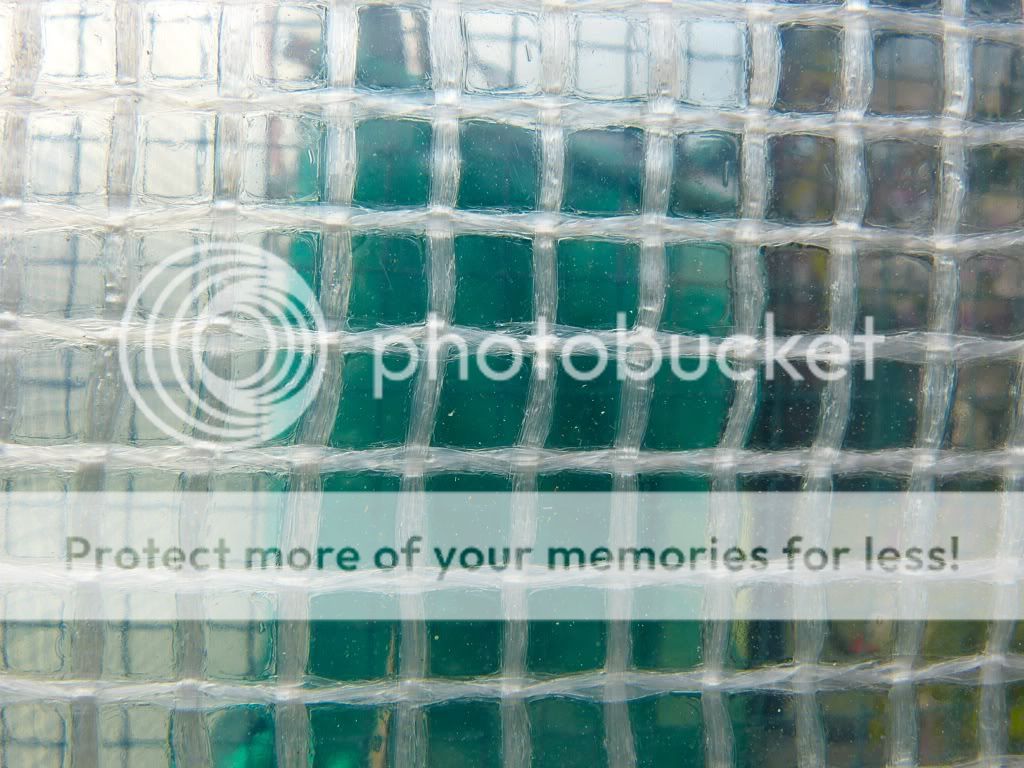
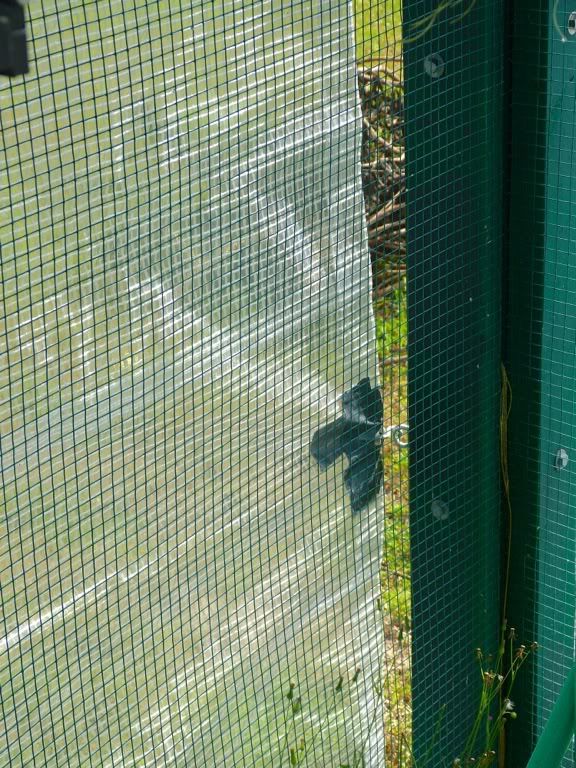
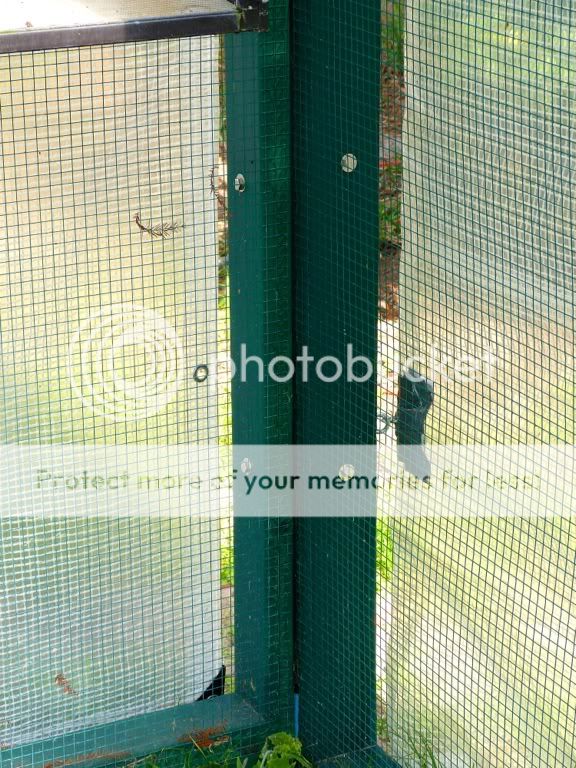
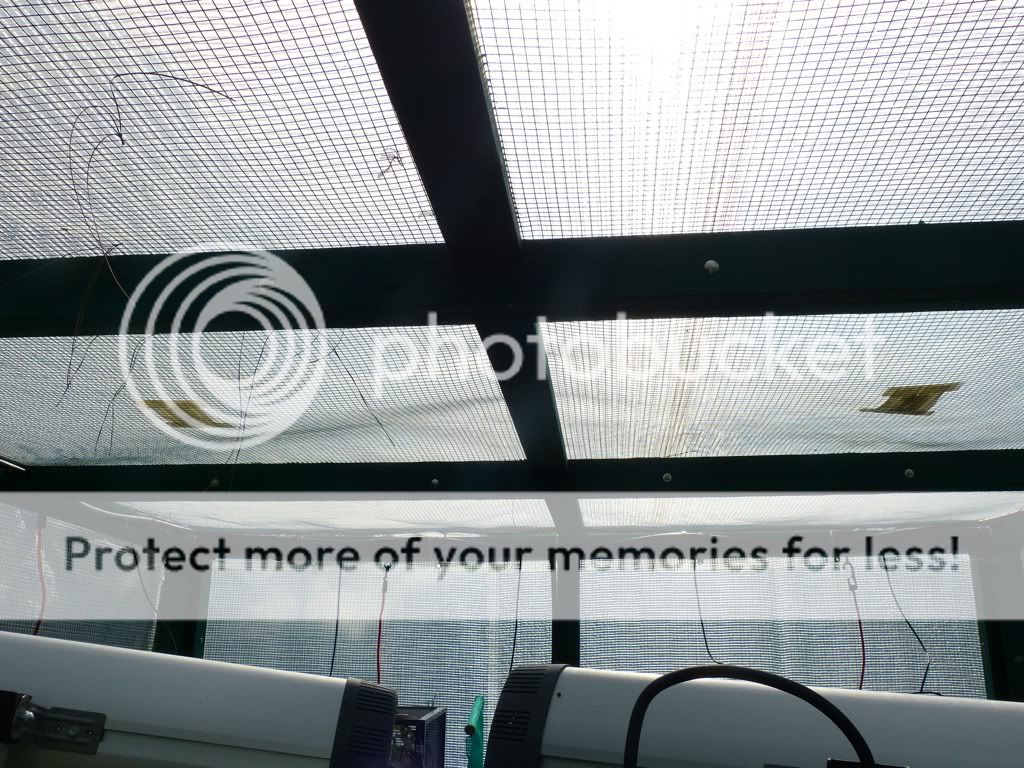
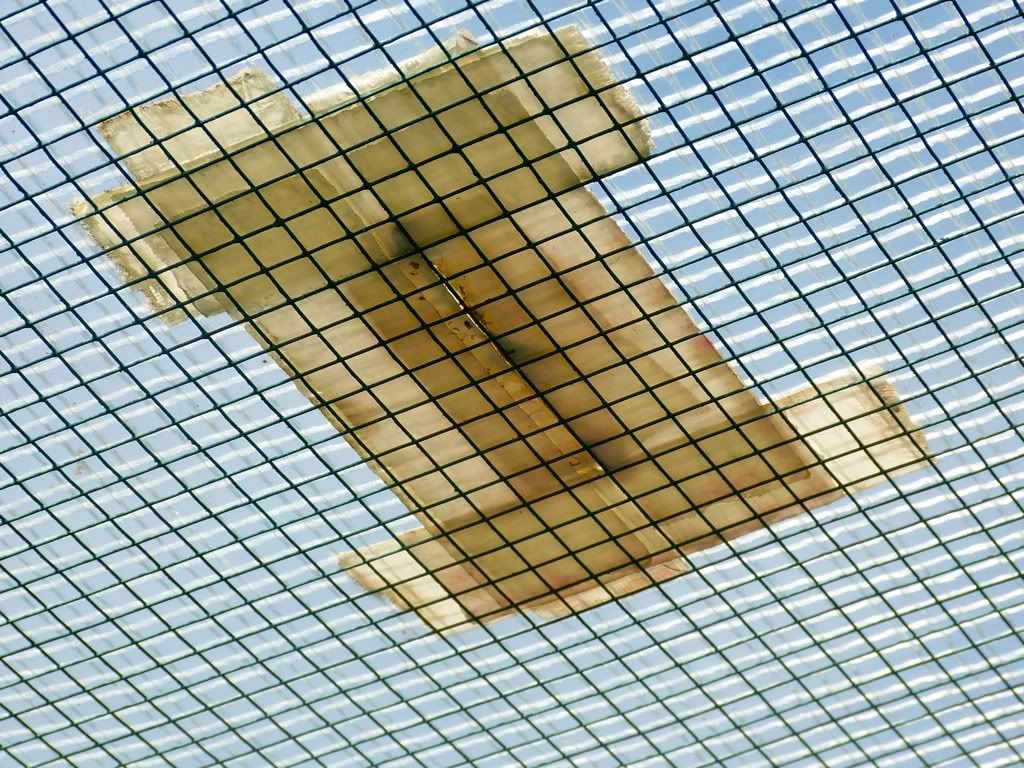
infrared and propane heaters on at night (different positional setups were tried):
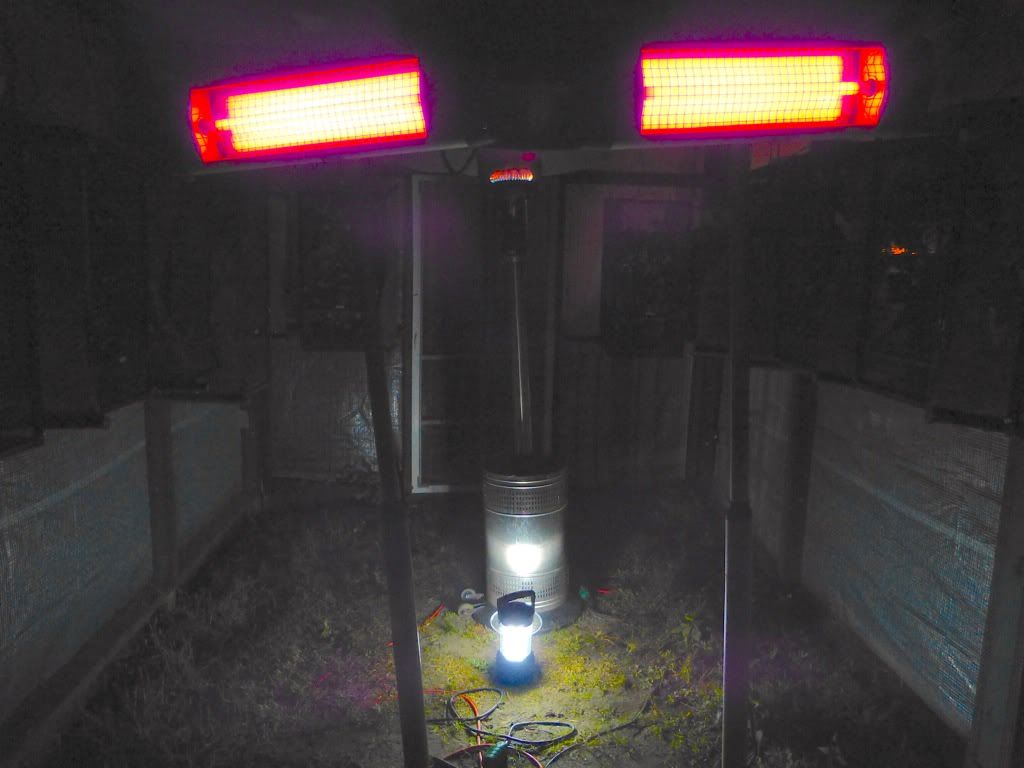

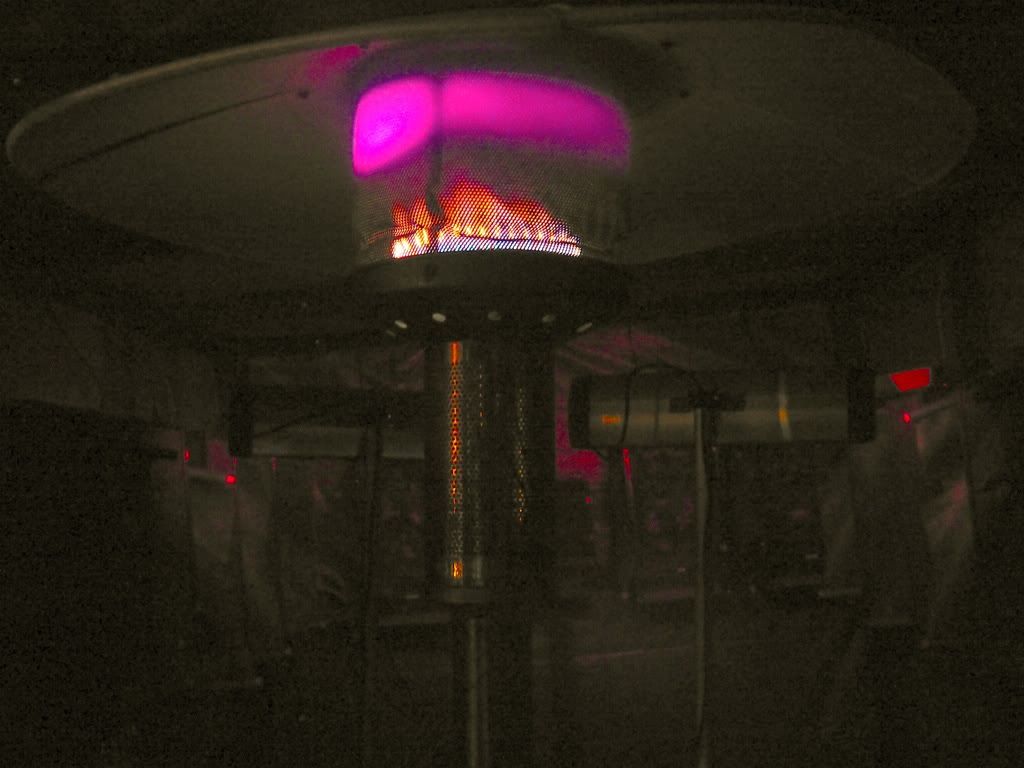
sample piece of Acrylite Alltop:
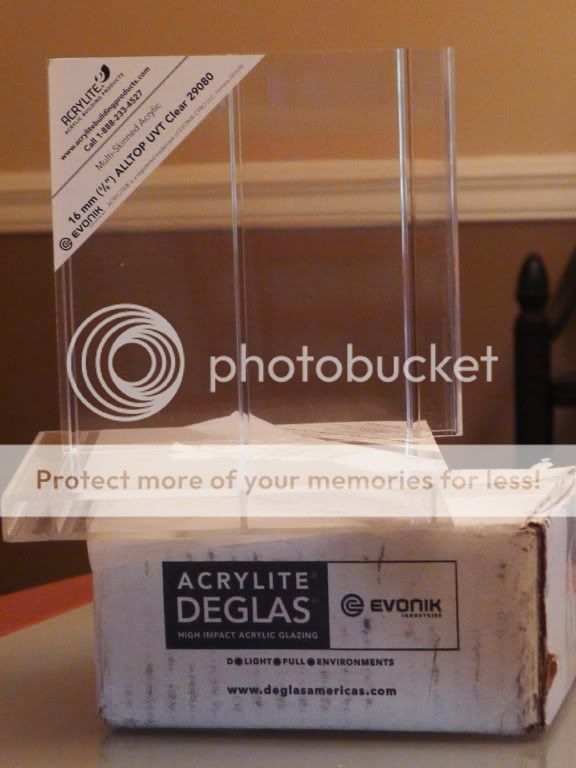
(to be continued)

